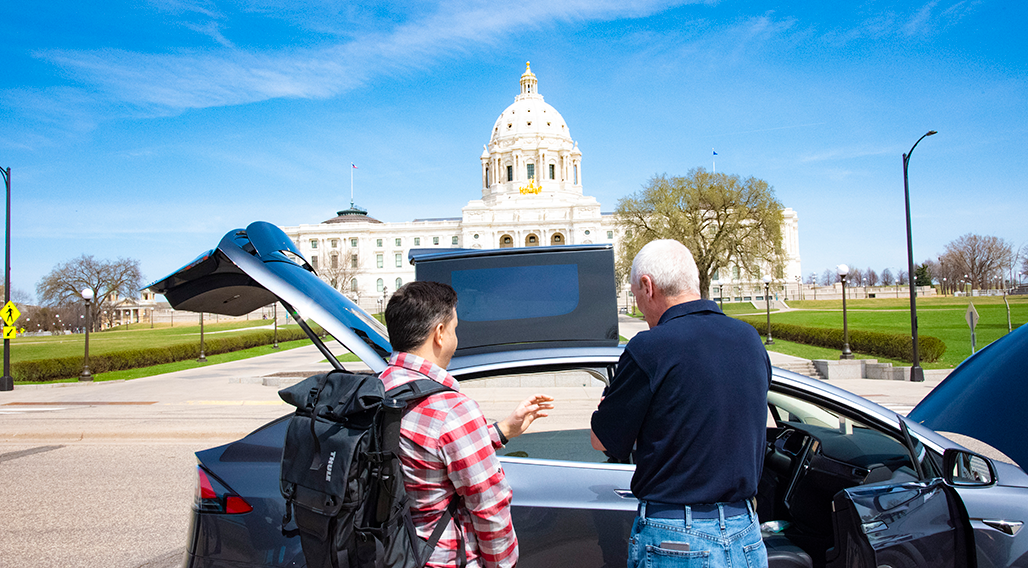Legislative Outcome on Electric Vehicles in Minnesota—Going Forward by Not Going Backward
June 11, 2019 | Brendan Jordan | Policy

We communicated a great deal about electric vehicle (EV) bills in the Minnesota legislature this year given their potential to shape the trajectory of EV adoption in the state. Some of the proposals would have increased EV adoption and infrastructure while others would have put up barriers. Minnesota’s legislature officially adjourned on May 20 and then completed its work in a short special session a few days later. So, what happened on EVs?
- Minnesota did not join many other states in increasing a dedicated EV tax, which would have slowed down adoption.
- There was bipartisan support for positive EV provisions in the House and Senate.
- The ultimate passage in the House of omnibus bills that included some of the positive provisions shows there is growing support for EVs, even though the provisions did not pass both chambers.
The legislature did no harm this year and progress will continue, along with increased awareness of the many economic and environmental benefits EVs can bring to Minnesota communities, businesses, and consumers. It’s mostly good news. Most notably, attempts to raise the special tax on EVs failed. There were bills that would have raised the current $75 EV tax to as much as $250. This would have been unfair, making EV-owning taxpayers pay thousands of dollars more over time in gas taxes and other highway taxes than owners of equivalent gasoline cars. Similar taxes have slowed EV sales in other states. GPI analyzed the impacts of these taxes and published information on how much more EV-driving taxpayers would pay if the tax passed. The EV tax was not increased and that is clearly a “win.”
House passage of supportive EV provisions signals progress
Legislators on both sides of the political aisle put forward proactive legislation to promote EVs. Stand-alone EV bills were introduced on a range of issues, including bills and funding to support investments in charging infrastructure, electric buses, and EV sales incentives. A number of these provisions passed the House floor—which is the most ambitious EV agenda to ever pass a body of the Minnesota legislature. It is unfortunate that these provisions didn’t make it all the way through the process, but the House passage still represents progress.
(You can read our summary of all the EV provisions that were under consideration this year.)
Momentum building toward greater support in the coming year
We’ll continue to build on the progress made as we look to next year. There is tremendous momentum around EVs in the state of Minnesota and the legislature did nothing to slow it down. A few examples:
- Metro Transit just opened the C-line bus rapid transit route which will be the first bus line to use EV buses (which were manufactured by New Flyer in St Cloud, MN).
- Minnesota Pollution Control Agency recently announced that it awarded the contract for the first round of DC fast charger corridor investments, which will make it easier to drive an EV throughout the state.
- The Minnesota Department of Transportation, in partnership with other state agencies and departments and The McKnight Foundation, launched an effort to explore potential strategies to reduce carbon emissions from cars, trucks, and buses in Minnesota. (GPI is leading the project’s stakeholder outreach.)
- Xcel Energy was recently approved by the Minnesota Public Utilities Commission for about $25 million in EV pilots.
The state’s EV industry will continue moving forward and will attract more and more champions as communities, businesses, and consumers recognize the benefits that EVs bring, from cleaner air to saving money.
A huge thank you to the legislators who carried EV bills and helped fight off EV taxes. And a huge thank you to all the organizations and individuals who contacted legislators this year.
